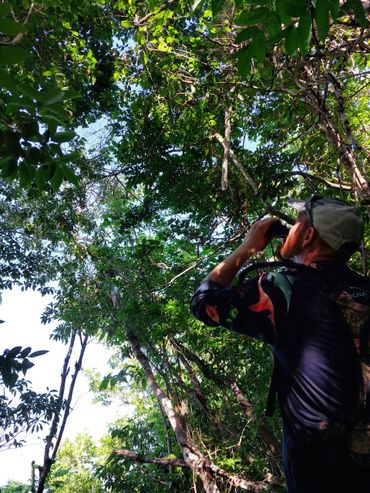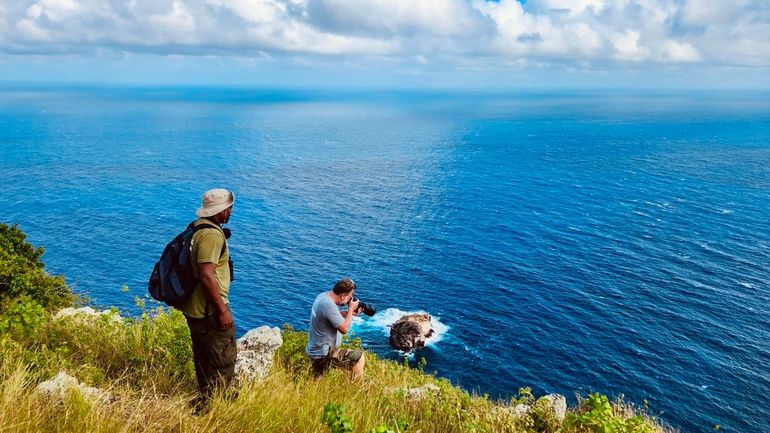
Updates from the Dutch Caribbean's bird monitoring project
Dutch Caribbean Nature Alliance (DCNA)Last year the Dutch Caribbean Nature Alliance (DCNA) officially launched the project ‘Monitoring for Bird Biodiversity Conservation in the Dutch Caribbean’. After a successful first year, all islands are preparing for the upcoming spring data collection. This initiative, supported by the Ministry of Agriculture, Nature, and Food Quality (LNV), aims to equip local nature management organizations on Aruba, Bonaire, Curaçao, Saba, St. Eustatius and St. Maarten with tools to actively monitor and protect land bird populations and their environments.

Bird population trends in different habitats
More than just data collection, this project facilitates analysis and knowledge sharing of bird population data trends, providing deeper insight into the environmental health of all six Dutch Caribbean islands. Scheduled to run through the first quarter of 2028, the project uses enhanced training, standardized monitoring programs and field surveys to provide insights into the health of local ecosystems. By assessing relative abundance, species composition and environmental changes, the initiative provides a unique lens through which the overall health of ecosystems can be evaluated. Birds act as key players in island ecosystems: they contribute to pollination and seed dispersal. Knowledge about their distribution highlights the importance of protected areas for vulnerable species.
For example, on Aruba, Bonaire and Curaco, substrate types are being surveyed which will allow comparison of avian species richness and evenness between lava and limestone habitats. On Saba, St. Maarten and St. Eustatius, vegetation types – known drivers of avian diversity – are being surveyed and compared. As the project progresses, it may be possible to make additional inferences about differences and similarities in bird composition within each island group
Insights from last year
As each island prepares for the upcoming spring data collection, it's essential to reflect on some intriguing findings from last year's surveys. On Aruba and Bonaire, fewer species were recorded in fall than spring, and species were more evenly distributed in the lava substrate. On Curacao, more species were observed in fall, and species richness/evenness was slightly higher in the lava substrate. During fall surveys on Aruba, Tropical Mockingbird, Black-faced Grassquit, Common Ground Dove and Bananaquit were most commonly observed, whereas on Bonaire the most common birds were the Brown-throated Parakeet, Brown-crested Flycatcher, Tropical Mockingbird and Venezuelan Troupial. Yellow Warbler was most commonly observed on Curacao, followed by Rufous-collared Sparrow, Bananaquit and Tropical Mockingbird. In spring and fall, the mean relative abundance of all species observed was higher in the limestone than lava substrates on Aruba and Bonaire. This was also the case on Curacao in spring, but not fall.

Similar to Aruba and Bonaire, on St. Eustatius and St. Maarten, more species were recorded in spring, with species being more evenly distributed in the dry forest. It is possible that rarer species inhabiting transition zones are ‘clumped’ in forest pockets compared to more common species with a wider distribution. On Saba, more species were observed in the dry forest and rainforest in fall, but fewer in the transition zone (between rain and dry forest). Bananaquit was one of the top four species most commonly observed on all three islands, together with Pearly-eyed Thrasher, Lesser Antillean Bullfinch and Scaly-naped Pigeon (on Saba); Zenaida Dove, Pearly-eyed Thrasher and Antillean Crested Hummingbird (on Statia); and Black-faced Grassquit, Lesser Antillean Bullfinch and Caribbean Elaenia (on St. Maarten). A summary of the data is publicly available on the Dutch Caribbean Biodiversity Database for those wishing to see all species observed.
Six island effort
DCNA would like to thank all islands for their efforts in making the first year of data collection a success and the Ministry of LNV for providing funding. With time, population trends will allow parks to consider whether it is necessary to implement (extra) conservation strategies for rare or declining species. This five-year project will provide crucial insight into the status of breeding land bird populations on all six Dutch Caribbean islands and will give policymakers tools to better plan for effective long-term conservation of local species. Spring data for 2024 will be collected on all six islands between March and April, so stay tuned to your local park management authorities for the latest information: Aruba National Parks Foundation (FPNA), STINAPA Bonaire, CARMABI Curaçao , Saba Conservation Foundation (SCF), Nature Foundation St. Maarten (NFSXM) and St. Eustatius National Parks (STENAPA).
Text: DCNA
Photos: Filippo Milan (lead picture: Bananaquit); STENAPA; Kai Wulf
